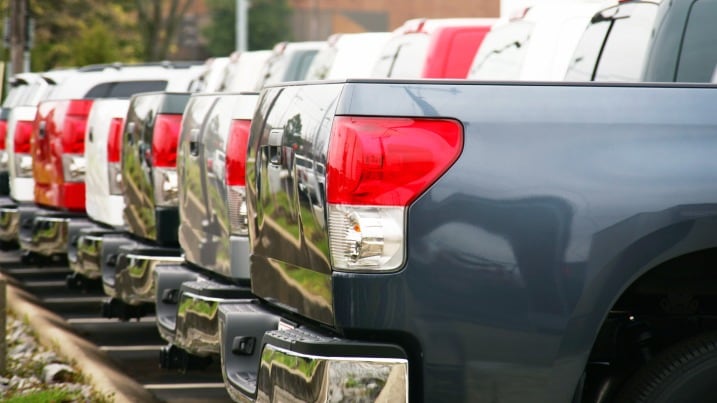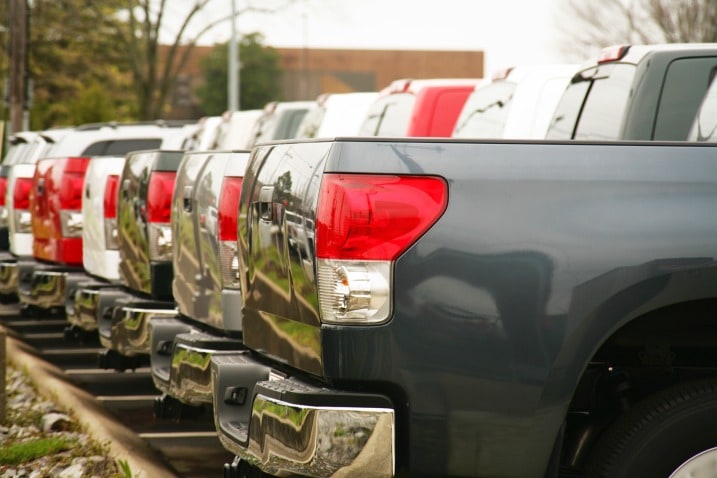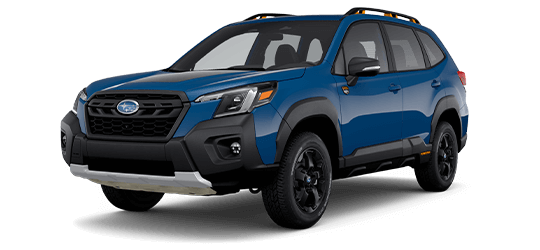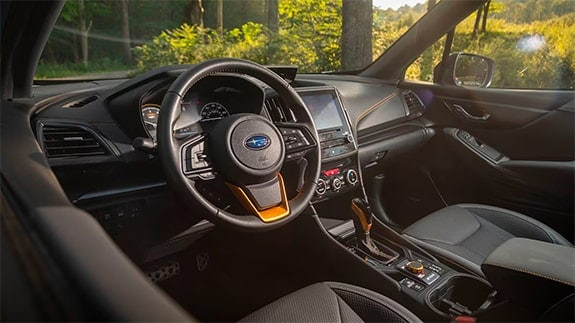3: Light-, Medium- or Heavy-Duty?
Once you know what you'll tow, find out how much it weighs and be sure to include the weight of the trailer, too. This information will help you choose between a light-duty and heavy-duty truck. In the past, manufacturers rated trucks by their payloads: half-ton, 3/4-ton and so on. Now, it's more common to hear trucks divided into light-duty, medium-duty and heavy-duty categories and identified by numbers such as 1500, 2500 and 3500 or 150, 250 and 350. For example, the Chevrolet Silverado 1500 and the Ford F-150 both have impressive towing capacities, but they are considered light-duty trucks.
Properly sizing the truck is important. If you skimp on power, the truck might have trouble hauling what you need. Similarly, if you opt for more truck than you need, it will cost more to purchase and to fill up. Plus, you'll have a harder time fitting into parking lots or tight driveways. Most experts will suggest slightly overestimating your requirements. A good rule of thumb is to have about 10% more capacity than you need.
If you are unsure about the requirements for towing, manufacturers put spec sheets and towing guides on their websites. For example, here are the towing guides for Chevrolet, Ford and Ram.
4: Choose an Engine and Axle Ratio
For some buyers, choosing the right engine size will be a balancing act between having enough power and getting good fuel economy. Trucks have long had a reputation for being gas-guzzlers. But manufacturers now offer more engine options than ever before, and many engines are more fuel-efficient than they were in the past. A V6 engine now can do the work of a V8 from a decade ago and get better fuel economy. And there are even four-cylinder engines to consider. Take a look at our Best Trucks list to see what our editors recommend.
Truckmakers typically offer diesel engines in heavy-duty trucks. But now you can choose a diesel engine on a midsize truck such as the Chevrolet Colorado or on a full-size, light-duty truck such as the Ford F-150. Diesel engines are better for towing: They provide high torque for pulling heavy loads at low speeds. Truck owners want the so-called low-end torque because it requires more force to start a heavy trailer rolling than it does to keep it going at a constant speed. Keep in mind that diesel vehicles might have some higher ownership costs. In some parts of the country, diesel fuel can cost as much as midgrade or premium gasoline. You'll also have to add diesel exhaust fluid as needed.
Another choice to make has to do with the axle ratio. Pickup trucks can typically be configured with a range of optional axle ratios, and your pick will directly affect the fuel economy and towing capacity of the vehicle.
Simply put, the higher the number for the axle ratio, the more you can tow but the lower your fuel efficiency will be. A truck with optional 3.73 gears, for example, will be able to tow more than one with 3.55 or 3.21 gears.
Unfortunately, the fuel economy information on the window sticker will not reflect these differences. You just have to know that any axle ratio you see listed on the "options" side of the window sticker will lower the fuel economy rating that's printed on the sticker.
5: Choose a Bed and Cab Size
Most manufacturers offer three to four cab sizes. Crew-cab (also called "Supercrew" or "Crew Max" by some manufacturers) trucks have four full-size doors and a generous back seat that's roomy enough for cross-country travel. Double-cab trucks have four doors, too, but the rear doors are slightly smaller and there is less legroom in the back. Extended cabs (also called Access, Quad, King or Super Cab) are slightly smaller and have rear doors that hinge outward and cannot be moved unless the front door has opened. The smallest truck cab is the regular cab, which has a single row of seating and limited space between the seats.
Keep in mind that the cab size may affect the bed length, which is the next choice you'll make. In other words, if you want a standard-length truck with a crew cab, that larger cab will take away length from the truck bed. If you want a larger cab and a long bed, you will wind up with a longer wheelbase and a truck that is harder to park and maneuver.
The bed sizes vary by manufacturer, but on midsize trucks, they are roughly 5 or 6 feet long. On full-size trucks, they are approximately 5.5 feet, 6.5 feet and 8 feet. Though it's nice to have lots of room for cargo, combining a crew cab with an 8-foot bed might mean you can't put the truck in your garage. To increase bed capacity without adding length to the truck, some manufacturers offer an optional bed extender that allows owners to lower the tailgate and use that as bed space.
To help you choose a bed length, think of the standard sizes of lumber or other construction materials you might need to carry. Sheetrock and plywood come in 4-by-8-foot dimensions, so you might need a longer bed for such loads.
6: Choose Trim, Options and Packages
The trim levels will have names such as XL, Laramie and Trail Boss. Each will come with its own set of features. On top of that, you'll see several packages that bundle options together based on a theme (think safety, technology or appearance). Edmunds expert reviews or the manufacturer's website should list what is included in the edition or package. Keep in mind that just because you can configure a truck on the website doesn't mean it will exist in the real world. It's important to be flexible, unless you'd like to special order the truck from the factory and wait a couple of months.
Making a list of your must-have features or packages is smart. With so many possible truck configurations, the best way to find the one you want is to give the list of your top features to the salesperson at the truck dealership. Explain your preferred color and, if you can be flexible, pick an alternate color. That will greatly improve your odds.
For example, you could say something like, "I'm looking for a 2019 Ram 1500, Laramie crew cab, with the 3.92 axle ratio, 33-gallon fuel tank, advanced safety group, and all-weather floor mats. My preferred color is Ivory Tri-Coat, but I'd take one in Patriot Blue if you have one with all my options."



 by
by 
